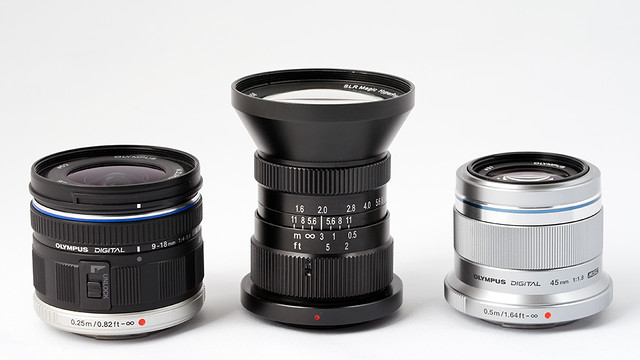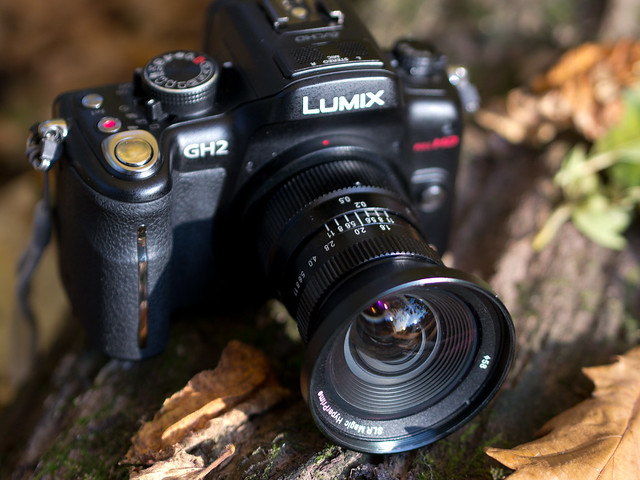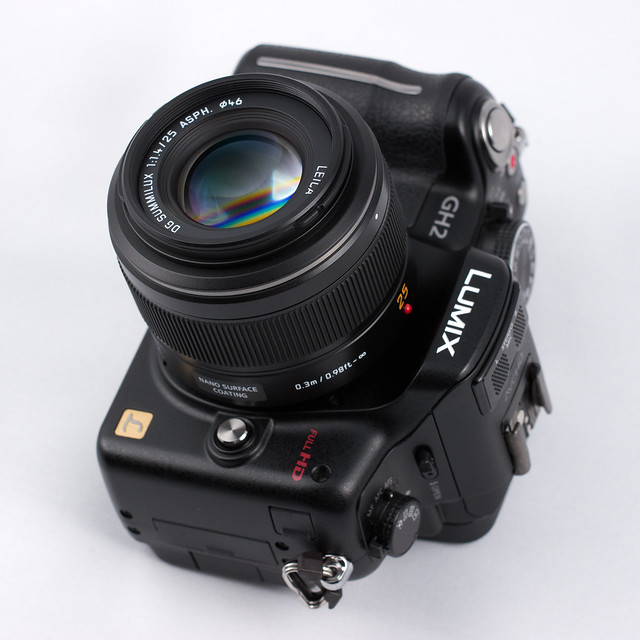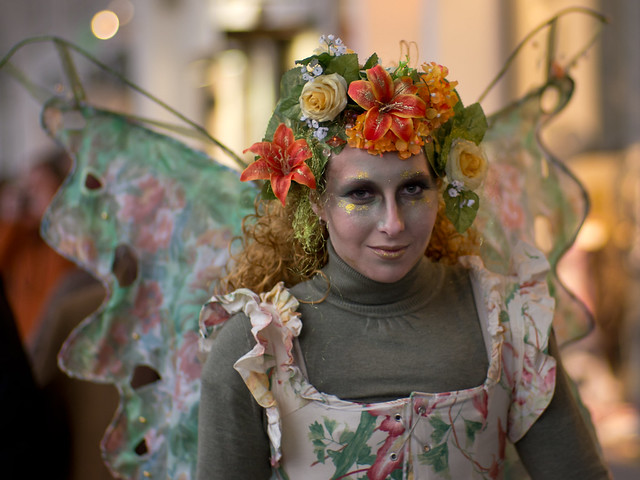After we already saw some reviews of the pre-production SLR Magic HyperPrime 12mm / F1.6 labeled under the "NOKTOR" brand and carrying a yellow/green ring, now I had the chance to test the "black ring" version that will go into production under the "SLR Magic" label. It will be available in December 2011 in the U.S.A. for a retail price of $499 US$. You might already have seen SLR Magic "Toy Lenses" with a colorful plastic look and quite blurry at open aperture. Now make yourself ready for a lens of a completely different standard!

It is very solid and well made, feeling like those premium compositions of metal and glass from Voigtlaender and Leica. It is operated completely manually and this is already one of the main differences to it's m4/3 competitor, the Olympus M.Zuiko 12mm/F2.0. The focus and aperture rings move very smooth allowing to adjust the focus very precisely. The diaphragm has 12 blades that can be closed stepless allowing to render round out-of-focus circles of confusion even stopped down to F2.0 or F2.8. The minimum distance is 0.15 m allowing macros with nice DOF effects as well. The lens comes with a metal front cap that is screwed into the filter thread.
First let us see how it's size compares to other m4/3 lenses:

Comparing sizes with the Olympus M.Zuiko 9-18mm ultra wide angle zoom (left) and the Olympus M.Zuiko 45/1.8 (right, which is nearly equal in size to the M.Zuiko 12/2.0).
And this is how it looks mounted to the Lumix GH2:

So what makes this lens different to the Olympus M.Zuiko 12/2.0? First of all it has no autofocus - but to be honest: I do not miss that very much at this lens as with wide angle lenses of this type you have a DOF from approx 3m to infinite even at open aperture when focused at about 7m. If it comes to macro distances, autofocus again will not help so much as manual focusing will give you much more control over the scenery.
Bokeh
Although the lens is getting a bit soft at open aperture (F1.6) it is still playing on a very high level and allows you some extra portion of bokeh with an even shallower DOF compared to F2.0:







